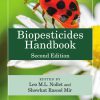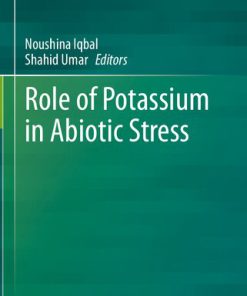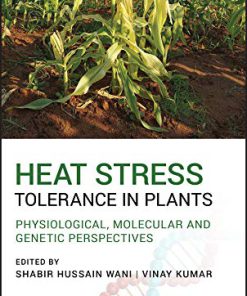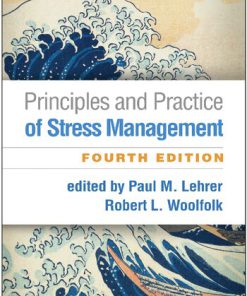Abiotic Stress and Legumes Tolerance and Management 1st Edition by Durgesh Kumar Tripathi, Samiksha Singh, Vijay Pratap Singh, Renu Bhardwaj, Sheo Mohan Prasad, Devendra Kumar Chauhan ISBN 9780128153550 0128153555
$50.00 Original price was: $50.00.$25.00Current price is: $25.00.
Abiotic Stress and Legumes Tolerance and Management 1st Edition by Durgesh Kumar Tripathi, Samiksha Singh, Vijay Pratap Singh, Renu Bhardwaj, Sheo Mohan Prasad, Devendra Kumar Chauhan – Ebook PDF Instant Download/Delivery: 9780128153550 ,0128153555
Full download Abiotic Stress and Legumes Tolerance and Management 1st Edition after payment
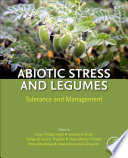
Product details:
ISBN 10: 0128153555
ISBN 13: 9780128153550
Author: Durgesh Kumar Tripathi, Samiksha Singh, Vijay Pratap Singh, Renu Bhardwaj, Sheo Mohan Prasad, Devendra Kumar Chauhan
Abiotic Stress and Legumes: Tolerance and Management is the first book to focus on the ability of legume plants to adapt effectively to environmental challenges. Using the -omic approach, this book takes a targeted approach to understanding the methods and means of ensuring survival and maximizing the productivity of the legume plant by improving tolerance to environmental /abiotic stress factors including drought, temperature change, and other challenges.
The book presents a comprehensive overview of the progress that has been made in identifying means of managing abiotic stress effects, specifically in legumes, including the development of several varieties which exhibit tolerance through high yield using transcriptomic, proteomic, metabolomic and ionomic approaches. Further, exogenous application of various stimulants such as plant hormones, nutrients, sugars, and polyamines has emerged as an alternative strategy to improve productivity under these environmental challenges.
Abiotic Stress and Legumes: Tolerance and Management examines these emerging strategies and serves as an important resource for researchers, academicians and scientists, enhancing their knowledge and aiding further research.
- Explores the progress made in managing abiotic stress, specifically with high yield legumes
- Highlights the molecular mechanisms related to acclimation
- Presents proven strategies and emerging approaches to guide additional research
Abiotic Stress and Legumes Tolerance and Management 1st Edition Table of contents:
1. Exploiting the potential of plant growth-promoting rhizobacteria in legume production
Abstract
1.1 Introduction
1.2 Importance of legumes
1.3 Major constraints in legume production
1.4 Plant growth-promoting rhizobacteria
1.5 Mechanism of action of plant growth-promoting rhizobacteria in enhancing legume cultivation
1.6 Conclusion
Acknowledgement
References
2. Nod factor signaling in legume-Rhizobium symbiosis: Specificity and molecular genetics of nod factor signaling
Abstract
2.1 Introduction
2.2 Legume-Rhizobium symbiosis: Responses in legumes
2.3 Specificity of legume rhizobial symbiosis
2.4 Initial steps of legume rhizobial symbiosis: Nodule organogenesis
2.5 In legumes: Nod factor signaling through molecular basis
2.6 Feedback regulation mechanism of Nod factor signaling
2.7 Conclusion and future prospectives
References
3. The importance of plant growth–promoting rhizobacteria for plant productivity
Abstract
3.1 Introduction
3.2 Function of plant growth–promoting rhizobacteria in plant growth
3.3 Conclusion and prospects
References
4. Modulations of legume plants in response to heavy metals induced stress
Abstract
4.1 Introduction
4.2 Toxic effects of heavy metals in legume plants
4.3 Mechanism of combating abiotic stress
4.4 Conclusion
References
5. Role of sugars in mediating abiotic stress tolerance in legumes
Abstract
5.1 Introduction
5.2 Sugars and plant physiology
5.3 Mechanism of sugar-mediated stress tolerance
5.4 Sugars promote abiotic stress tolerance in legumes
5.5 Conclusion and future perspectives
Acknowledgements
References
6. Circadian regulation of abiotic stress tolerance in legumes
Abstract
6.1 Introduction
6.2 Abiotic stress: emphasis on legume crops
6.3 Symbiosis under abiotic stress
6.4 Stress responsive genes
6.5 Prospective: towards the elucidation of molecular mechanisms underlying abiotic stress tolerance
6.6 Circadian regulation of stress responsive genes
6.7 Circadian control of phytohormone biosynthesis and signaling: enzymatic regulation
6.8 Abiotic stress tolerance by modified circadian regulation mechanisms in legumes
6.9 Conclusion and future prospectives
References
7. Polyamines: A promising strategy for imparting salinity stress tolerance in legumes
Abstract
7.1 Introduction
7.2 Polyamines
7.3 PA response to salinity
7.4 Effect of PAs on various physiological and biochemical processes in crop plants under salt stress
7.5 ROS homeostasis/antioxidant response
7.6 PAs: Potential compatible solutes in plants
7.7 Conclusion and future perspectives
Acknowledgement
Conflict of interest
References
8. Phytohormonal signaling under abiotic stress in legumes
Abstract
8.1 Introduction
8.2 Legumes under different stress conditions
8.3 Hormonal signaling pathways
8.4 Regulation of homeostasis by Ca+2-dependent SOS signaling
8.5 Role of ABA signaling in stress tolerance
8.6 Reactive oxygen species stress signaling by MAPK modules
8.7 Hormonal cross-talk during stress
References
9. Uncovering the role of melatonin as abiotic stress manager in legumes
Abstract
9.1 Introduction
9.2 MEL biosynthesis in plants
9.3 Stress-induced alteration in SER/MEL levels
9.4 Exogenous application of MEL and abiotic stress
9.5 Underlying mechanism of MEL-refereed tolerance and detoxification
9.6 Conclusion
References
10. Role of reactive oxygen species in the regulation of abiotic stress tolerance in legumes
Abstract
10.1 Introduction
10.2 Reactive oxygen species homeostasis
10.3 Reactive oxygen species-mediated regulation of abiotic stress in legumes
10.4 Role of reactive oxygen species in symbiotic association in legumes in abiotic stress regulation
10.5 Performance of transgenic plants with altered expression of reactive oxygen species regulatory genes under abiotic stresses
10.6 WRKY: an important regulator of reactive oxygen species network under abiotic stress response
10.7 DEAD box helicases-mediated reactive oxygen species responses under abiotic stress
10.8 Do all kinds of abiotic stresses induce the same kind of response by the reactive oxygen species regulatory network?
10.9 Conclusions and future prospects
Acknowledgements
Conflicts of interest
References
11. Role of metabolites in abiotic stress tolerance in legumes
Abstract
11.1 Introduction
11.2 Primary metabolites in legumes and their role in abiotic stress tolerance
11.3 Secondary metabolites in legumes and their role in abiotic stress tolerance
11.4 Conclusion
References
12. Quorum sensing signaling molecules and their inhibitors in legume-associated bacteria
Abstract
12.1 Introduction
12.2 Quorum sensing systems in rhizobacteria
12.3 Quorum sensing in legume-associated bacteria
12.4 Quorum sensing inhibitors
12.5 Opinion
Acknowledgments
References
13. Plant genes for abiotic stress in legumes
Abstract
13.1 Introduction
13.2 Shoot apical meristem response to abiotic stress
13.3 Conclusion and prospects
References
14. MicroRNAs and abiotic stress tolerance in legumes
Abstract
14.1 Introduction
14.2 Abiotic stress and legumes
14.3 Approaches in legumes to abiotic stress
14.4 Biogenesis of micro ribonucleic acids in plants
14.5 Functional role of micro ribonucleic acids in plants
14.6 Biological processes
14.7 Metabolic processes (posttranscriptional gene regulation)
14.8 Identification of micro ribonucleic acids in legumes
14.9 Role of micro ribonucleic acids in abiotic stress in plants
14.10 Conclusions
References
15. QTL mapping for abiotic stress in legumes
Abstract
15.1 Introduction
15.2 Abiotic stresses affecting legumes
15.3 Quantitative Trait Loci mapping for abiotic stress in legumes
15.4 Transfer of QTLs to breeding programs
15.5 Conclusion
References
16. Genetic engineering of legumes for abiotic stress tolerance
Abstract
16.1 Introduction
16.2 Response of legume crops against major abiotic stresses
16.3 Biotechnological tools to improve resistance against abiotic stress
16.4 Conclusion
References
Index
People also search for Abiotic Stress and Legumes Tolerance and Management 1st Edition:
abiotic stress and legumes tolerance and management
abiotic plant stress
abiotic and biotic stresses in plants
abiotic stress factors
are legumes abiotic or biotic
Tags:
Durgesh Kumar Tripathi,Samiksha Singh,Vijay Pratap Singh,Renu Bhardwaj,Sheo Mohan Prasad,Devendra Kumar Chauhan,Abiotic Stress,Legumes Tolerance
You may also like…
Uncategorized
Genomic Designing for Abiotic Stress Resistant Technical Crops 1st Edition Chittaranjan Kole
Computers - Networking
Biology and other natural sciences - Plants: Botany
Role of Potassium in Abiotic Stress Noushina Iqbal Shahid Umar
Medicine - Others
Biology and other natural sciences - Biology
Biology and other natural sciences - Molecular
Relationships & Lifestyle - Psychological Self-Help
Principles and Practice of Stress Management Fourth Edition Paul M. Lehrer
Uncategorized
Biology and other natural sciences - Plants: Agriculture and Forestry
Engineering Tolerance in Crop Plants Against Abiotic Stress 1st Edition Khurshed Ahmad Shah

